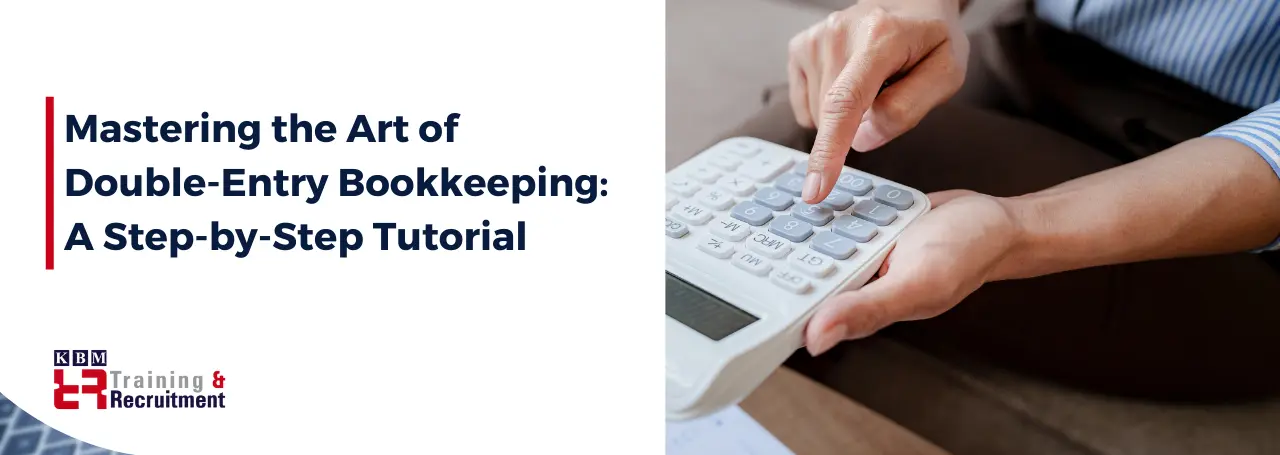In financial management, mastering double-entry bookkeeping is a fundamental skill for individuals and businesses alike. It's not just about recording numbers; it's a systematic approach ensuring accuracy and financial transparency.
This comprehensive article will explain the complexities of double-entry bookkeeping, offering a step-by-step guide for those looking to elevate their financial literacy.
Understanding Double-Entry Bookkeeping
- The Dual Impact: Double-entry bookkeeping operates on the principle that every financial transaction impacts at least two accounts – a debit and a credit. This ensures a perpetual balance in the accounting equation: Assets = Liabilities + Equity.
- Debits and Credits: Debits and credits are the languages of double-entry bookkeeping. Understanding their role is crucial. Debits increase assets or expenses and decrease liabilities or income, while credits increase liabilities or income and decrease assets or expenses.
- Accounting Equation: The accounting equation (Assets = Liabilities + Equity) is the guiding force at its core. Each transaction reverberates through this equation, maintaining equilibrium in financial records.
Guide to Double-Entry Bookkeeping
Setting Up Your Books
- Establishing the Foundation: Developing a chart of accounts is the first step. Categorise your assets, liabilities, Equity, income, and expenses. This serves as the backbone for your financial structure.
- Initiating Balances: Input initial balances for each account to set the starting point for your financial records.
Recording Transactions
- Decoding Transaction Types: Identify the nature of each transaction – be it a sale, purchase, expense, loan, or investment.
- Debits and Credits in Action: Apply the appropriate debits and credits for every transaction, ensuring a harmonious balance in your accounts.
- Visualising with T-Accounts: Utilise T-Accounts to visually represent transactions, making it easier to comprehend and balance.
Types of Accounts in Double-Entry Bookkeeping
- Navigating Asset Transactions: Understand how assets are impacted – debits increase, credits decrease.
- Liabilities in Motion: Decipher the dance of liabilities – debits decrease, credits increase.
- Equity's Double Play: Grasp how Equity is affected – debits decrease, and credits increase.
- Revenue and Expenses Unveiled: Explore the impact on revenue and expenses – debits decrease, credits increase (revenue), and vice versa for expenses.
Balancing and Trial Balance
- Regular Checks: Ensure regular checks that total debits equal total credits for each transaction.
- Trial Balance Validation: Create a trial balance to validate the accuracy of your records – the sum of debits equals the sum of credits.
Adjusting Entries
- Accruals and Prepayments: Navigate through adjusting entries for accrued revenues, accrued expenses, and prepayments.
Financial Statements
- Insightful Statements: Prepare financial statements like the income, cash flow, and balance sheets to gain insights into your financial position.
Closing Entries
- Finalising the Cycle: Close entries by transferring net income, zeroing revenue and expense accounts, and concluding with the post-closing trial balance.
Practical Application: A Case Study
Tech Innovations Ltd: A Sales Transaction
- Identifying the Transaction: Tech Innovations Ltd records a £5,000 sale of computer hardware.
- Applying Debits and Credits: Debit Cash (Assets) £5,000 (increase) and Credit Sales (Revenue) £5,000 (increase).
- Visual Representation: Cash (Debit) £5,000, Sales (Credit £5,000)
- Validation: Verify that total debits equal credits £5,000 (Debit) = £5,000 (Credit).
- Trial Balance Integration: Include the transaction in the trial balance for a comprehensive overview.
Conclusion
Mastering double-entry bookkeeping is not just about numbers; it's a journey towards financial understanding and control. This tutorial has walked you through the fundamental principles, the step-by-step process, and practical applications, whether you're an individual managing personal finances or a business owner steering a company's financial course.
The art of double-entry bookkeeping is a skill that empowers you to make informed decisions and ensures the financial health of your endeavours. Dive in, practice, and witness the transformation in how you perceive and manage your finances.






















